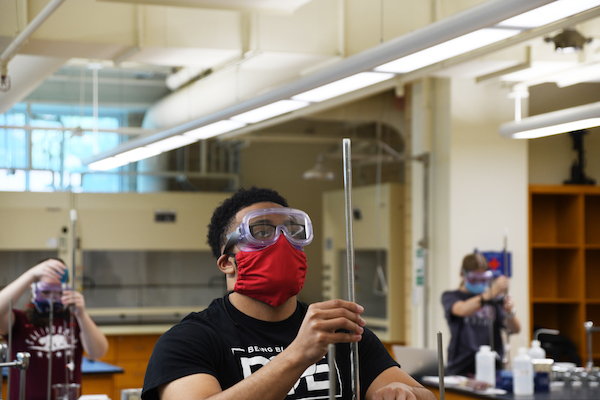President's Blog: From the Heart

Heroic Work
By Eric F. Spina
With a lead time of just a dozen days, hundreds of University of Dayton faculty hastily moved last spring’s courses to Zoom rooms. Many had never taught online, and some found themselves helping their young children adapt to virtual classes, too.
Their teaching space blurred into their living space as the pandemic turned all of our lives upside down in a blink.
In my eyes, these faculty are heroes.
At the Jan. 8 Learning Teaching Forum, which drew approximately 270 faculty and staff for a day of sharing lessons learned while teaching during a pandemic, I felt the spirit of our founders. Indeed, the Marianist philosophy of “reading the signs of the times,” adaptation, and seizing the moment has guided us throughout history.
In session after session of the Forum, our colleagues shared pedagogical tips as we continue to explore ways we teach and learn, particularly when we can’t always bring students together in traditional ways.
For instance, UD’s FlexTeaching Listserv, organized through the Ryan C. Harris Learning Teaching Center, has helped more than 200 faculty from every corner of campus connect and find answers together. They’ve taught each other how to mount a phone to make a makeshift document camera at home or shared their experiences with apps students can use to scan their written work.
“I’ve been able to add new ideas to my teaching,” said Spanish professor Francisco Peñas-Bermejo. “It sparked my interest in new technology, in new ways to present my material.”
This fall, faculty reimagined science labs and developed ways to engage students in classrooms that required social distancing. The Center for Social Concern adapted its social justice programs, creating, among other new initiatives, a retreat that invited students to explore how their faith calls them to be anti-racist. Associate Professor of English Patrick Thomas enlisted students as editorial assistants for a recently published collection of cases studies in experiential learning written by UD faculty.
With nearly 400 acres, UD’s sprawling campus provided a readymade canvas for research, teaching — and hands-on student work. Geology lecturer Andrew Rettig and Katie Schoenenberger in the Hanley Sustainability Institute worked with students to design sensors for monitoring the temperature in compost piles. Leah Ceperley, sustainability planning and evaluations manager in the facilities management division, helped biology students earn internship credit through managing native planting areas around campus. Izzy Shutte, who’s studying environmental biology, mapped trees and used a wildlife camera to capture the types of animals living on campus. Grace Burke in John Clarke’s visual arts class finished designing signs for the solar prairie at Curran Place. These are just several of the collaborations that kept students on campus to care for our common home.
We teach our students to be adaptable and resilient. Our faculty and staff have taken those lessons to heart, too — and we’re a better university because of their flexibility and creativity.
